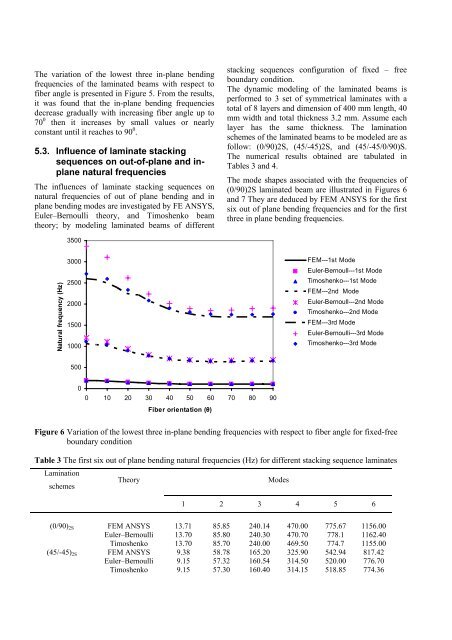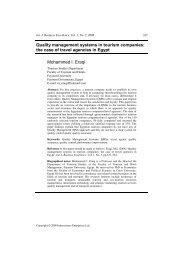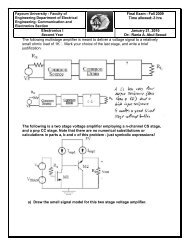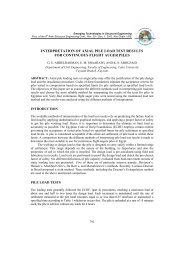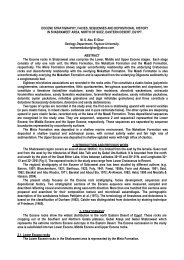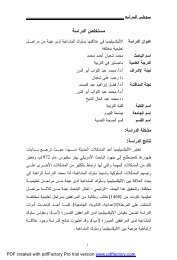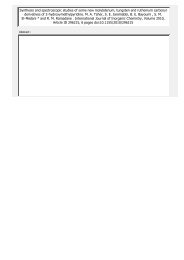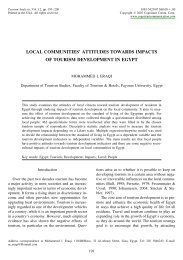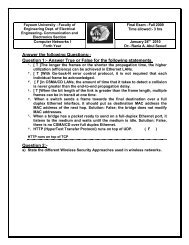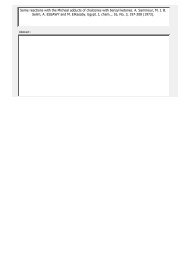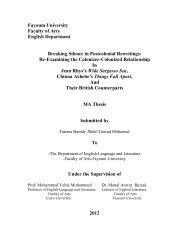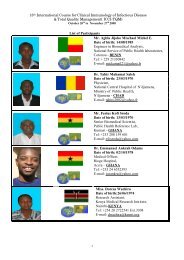EFFECTS OF FIBER ORIENTATION AND LAMINATE STACKING ...
EFFECTS OF FIBER ORIENTATION AND LAMINATE STACKING ...
EFFECTS OF FIBER ORIENTATION AND LAMINATE STACKING ...
Create successful ePaper yourself
Turn your PDF publications into a flip-book with our unique Google optimized e-Paper software.
The variation of the lowest three in-plane bending<br />
frequencies of the laminated beams with respect to<br />
fiber angle is presented in Figure 5. From the results,<br />
it was found that the in-plane bending frequencies<br />
decrease gradually with increasing fiber angle up to<br />
70 0 then it increases by small values or nearly<br />
constant until it reaches to 90 0 .<br />
5.3. Influence of laminate stacking<br />
sequences on out-of-plane and in-<br />
plane natural frequencies<br />
The influences of laminate stacking sequences on<br />
natural frequencies of out of plane bending and in<br />
plane bending modes are investigated by FE ANSYS,<br />
Euler–Bernoulli theory, and Timoshenko beam<br />
theory; by modeling laminated beams of different<br />
Natural frequency (Hz)<br />
3500<br />
3000<br />
2500<br />
2000<br />
1500<br />
1000<br />
500<br />
0<br />
0 10 20 30 40 50 60 70 80 90<br />
Fiber orientation (θ)<br />
stacking sequences configuration of fixed – free<br />
boundary condition.<br />
The dynamic modeling of the laminated beams is<br />
performed to 3 set of symmetrical laminates with a<br />
total of 8 layers and dimension of 400 mm length, 40<br />
mm width and total thickness 3.2 mm. Assume each<br />
layer has the same thickness. The lamination<br />
schemes of the laminated beams to be modeled are as<br />
follow: (0/90)2S, (45/-45)2S, and (45/-45/0/90)S.<br />
The numerical results obtained are tabulated in<br />
Tables 3 and 4.<br />
The mode shapes associated with the frequencies of<br />
(0/90)2S laminated beam are illustrated in Figures 6<br />
and 7 They are deduced by FEM ANSYS for the first<br />
six out of plane bending frequencies and for the first<br />
three in plane bending frequencies.<br />
FEM---1st Mode<br />
Euler-Bernoull---1st Mode<br />
Timoshenko---1st Mode<br />
FEM---2nd Mode<br />
Euler-Bernoull---2nd Mode<br />
Timoshenko---2nd Mode<br />
FEM---3rd Mode<br />
Euler-Bernoulli---3rd Mode<br />
Timoshenko---3rd Mode<br />
Figure 6 Variation of the lowest three in-plane bending frequencies with respect to fiber angle for fixed-free<br />
boundary condition<br />
Table 3 The first six out of plane bending natural frequencies (Hz) for different stacking sequence laminates<br />
Lamination<br />
schemes<br />
Theory Modes<br />
1 2 3 4 5 6<br />
(0/90)2S FEM ANSYS 13.71 85.85 240.14 470.00 775.67 1156.00<br />
Euler–Bernoulli 13.70 85.80 240.30 470.70 778.1 1162.40<br />
Timoshenko 13.70 85.70 240.00 469.50 774.7 1155.00<br />
(45/-45)2S FEM ANSYS 9.38 58.78 165.20 325.90 542.94 817.42<br />
Euler–Bernoulli 9.15 57.32 160.54 314.50 520.00 776.70<br />
Timoshenko 9.15 57.30 160.40 314.15 518.85 774.36


